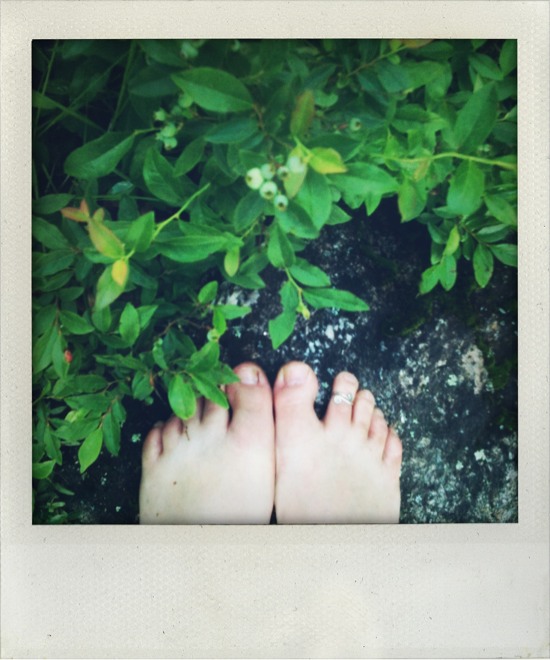Just hard this awesome project on NPR so I must repost it as I just did on Facebook! :D
Window Farming: A Do-It-Yourself Veggie Venture
by Jon Kalish
April 4, 2010
Julia Makarova
Homegrown Harvest: Britta Riley and Rebecca Bray tend to Brooklyn's first window farm. This form of urban agriculture is catching on in cities around the world, as downtown farmers go online to share techniques for growing greens indoors.
If you have a green thumb, a window and a serious Do-It-Yourself ethic, you too, can be a farmer ... even in your downtown apartment building. Spring is here, and for urban dwellers with no access to soil, hydroponic gardening is a way to grow fresh veggies indoors.
"Window farming," as it is called, is catching on in New York City and beyond. Window farmers use recycled Window farmers use recycled 1.5 liter water bottles, clay pellets, plastic tubing and inexpensive fish tank air pumps to create their indoor gardens. There are now 4,000 registered users at windowfarms.org. Farmers are tending to their greens everywhere from the U.S. to Italy, Israel and Hong Kong.
A simple window farm system is a column of upside down water bottles, with plants growing out of holes cut into the sides. An air pump is used to circulate liquid nutrients.
Last year in Brooklyn, N.Y., Britta Riley, 33, raised $27,000 for her window farms project through an online micro-donation web site. She's a true Do-It-Yourselfer.
"I grew up on a ranch in Texas," Riley says. "So we always had to hack together what we needed to fix fences and so forth."
Riley's project partner is Maya Nayak, 29, a professional gardener. Nayak has been growing herbs in her own window farm in her ground floor apartment. A sign in her window advertises windowfarms.org — and plenty of people have paused to check it out.
"We had to put up a curtain," she explains, "because people come up and look. And you're, like, 'Wow, this is my living room.'"
The people staring in from the street see a window filled with vertical columns of plants. Vegetables and herbs grow with the help of sunlight and a little electricity — but no soil.
The window farms Web site provides instructions on how to put together a system that grows three plants. The materials will cost about $30 — and not all of them are traditional gardening supplies: water bottles, an aquarium air pump, air valve needles (like the kind you use to pump up a basketball), and a hanging system designed for displaying art.
Riley says that putting recycled consumer goods to use is an important part of the DIY ethic.
"We're kind of showing that we can actually get really, really far using things that we already have available to us as consumers," she says.
The simplest window farm system is a column of upside-down water bottles connected to one another. Plants grow out of holes cut into the sides. An air pump is used to circulate liquid nutrients that trickle down from the top of the column and make their way to the plant roots.
Window farms have been used to grow strawberries, cherry tomatoes and peppers. Riley's favorite is bok choi.
"Buttercrunch lettuce grows great and lots of herbs," Nayak says. "Anything leafy and green, essentially. You can't grow carrots. I mean, you can't grow root vegetables. Potatoes, garlic. Those things don't work."
Urban farmers use the Internet to exchange ideas for improving the window farms technology. It's a process Riley calls "R&D-I-Y" or Research and Develop It Yourself. One window farmer figured out a way to silence the gurgling sounds these window farm systems make — and he shared his solution with the rest of the indoor gardening community.
"He just drilled a few holes into a vitamin bottle and stuck it over the end and all of a sudden it completely silenced the system," Riley explains. "And then he posted that for everybody else and all of a sudden we have a new solution that's cheap and that other people can replicate somewhere else."
In the coming months, Riley and her colleagues will focus on how much energy it takes to run the air pumps and compact fluorescent light bulbs that are turned on when access to sunlight is a problem. Riley says that in addition to the environmental benefits of growing your own food at home, there are aesthetic wins as well.
"It's just fun to have food growing in your own apartment," Riley says. "Especially during the winter months you've got this lush bunch of green lettuce that's growing in the window and kind of freshening the air in your apartment and it actually just looks pretty."
And it's about to get easier. For people who are excited about window farming but not so gung-ho about starting from scratch, Riley says her group will soon begin selling window farming kits
Sunday, April 4, 2010
Window Farms
Labels:
Brooklyn,
growing,
home grown,
NPR,
sunlight,
sustainable,
window farms,
windowfarms.org,
windows
Subscribe to:
Post Comments (Atom)




No comments:
Post a Comment